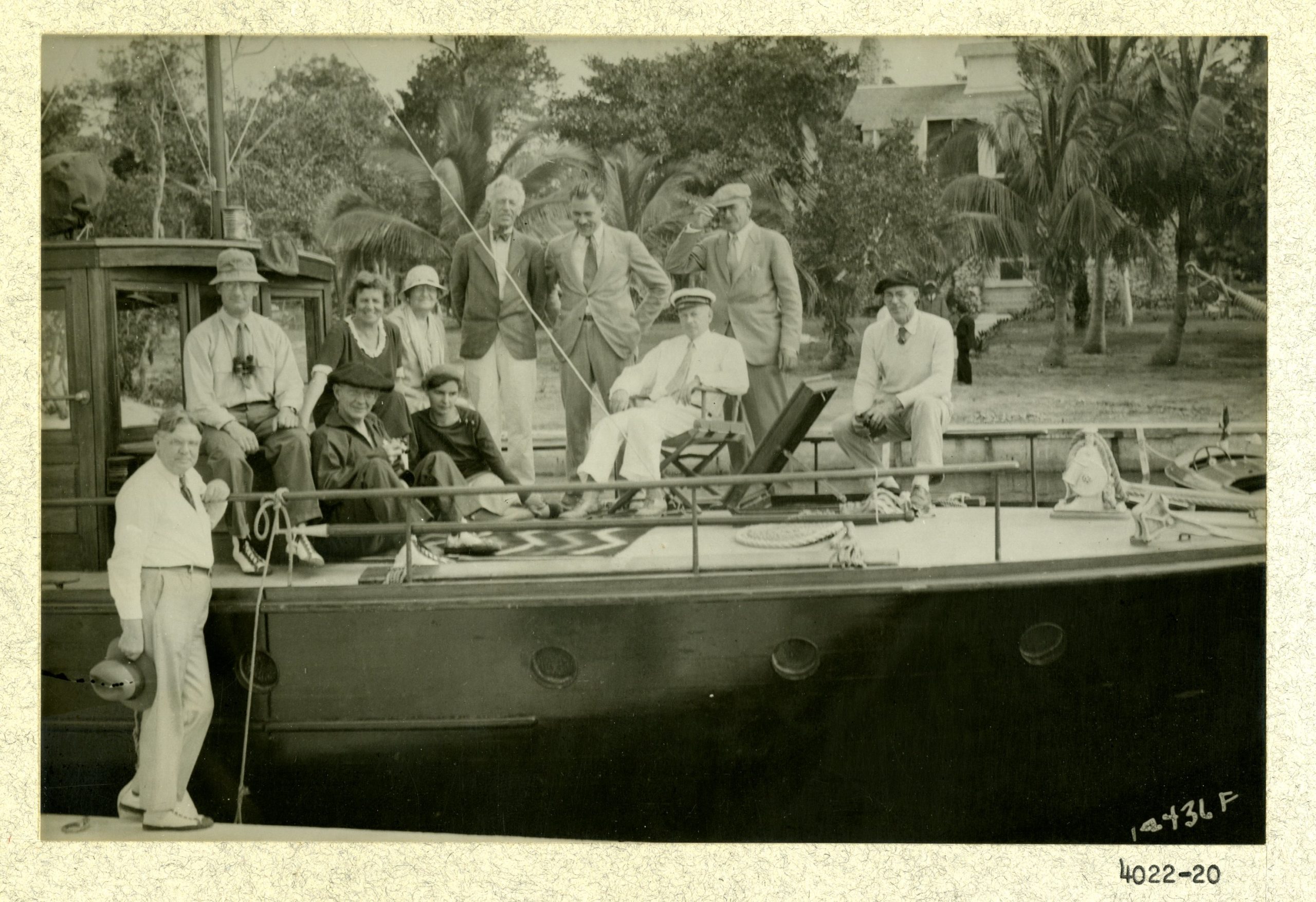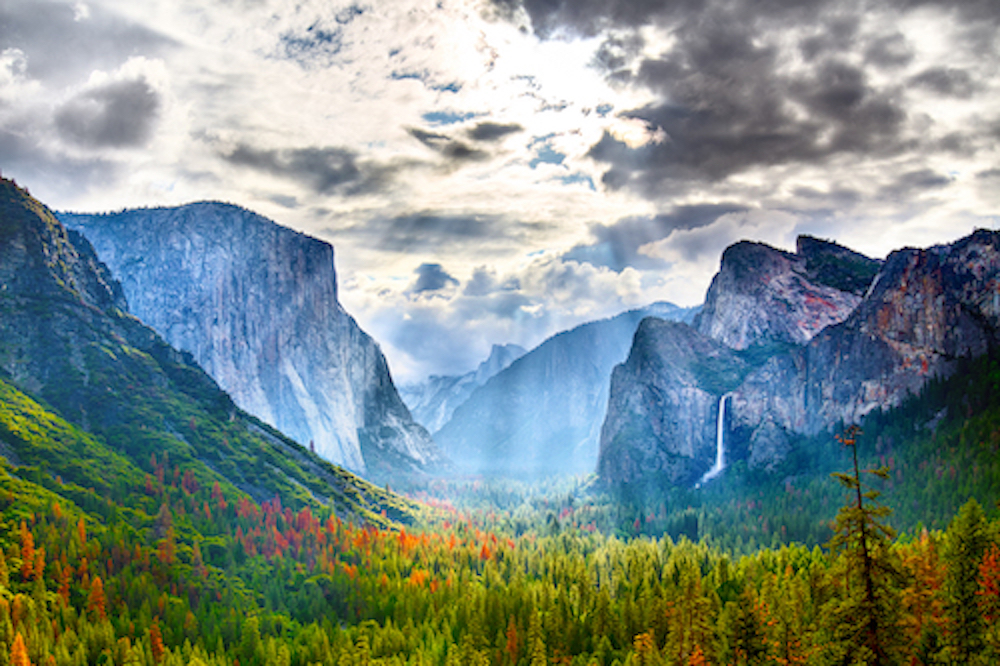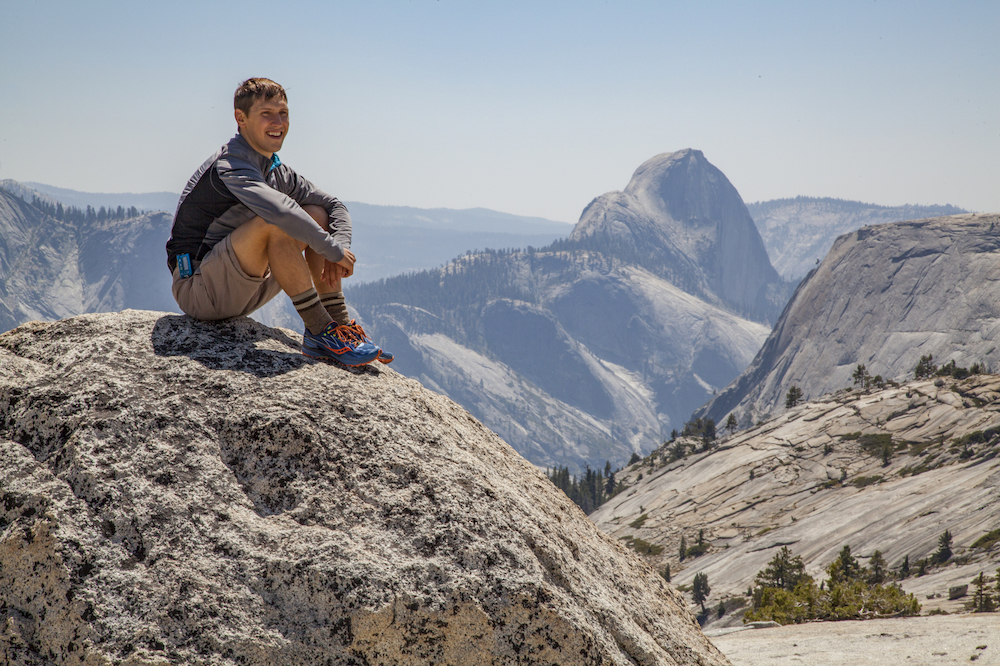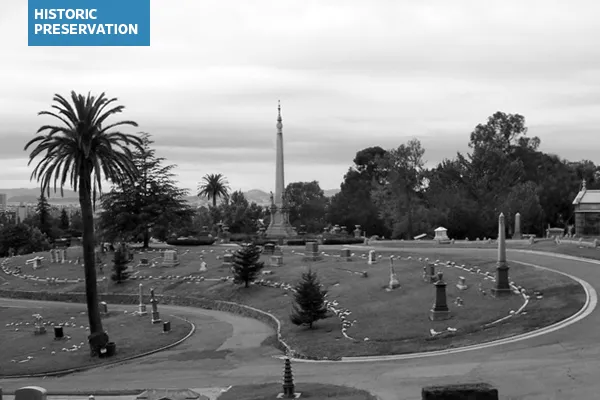
When one thinks of Olmsted, states like Massachusetts, New York, New Jersey, maybe Connecticut immediately come to mind, but not everyone associates the Olmsted firm with work in California, where I live. While the list of Olmsted designed projects in my state is relatively short—I’ve identified ten projects so far—some of Olmsted’s most notable and impactful work was done here in California.
Probably most notable is the planning work done for Yosemite National Park. Olmsted Sr. provided the original vision for Yosemite in 1865 and Olmsted Jr.’s statement of purpose for the National Park Service in 1916 laid the groundwork for our national park system.
The firm also developed early plans for two important university campuses in California: The University of California at Berkeley and Stanford University in Palo Alto.
One of Olmsted Senior’s earliest commissions was Mountain View Cemetery in my hometown. I documented it for HALS in 2009. For a person of such remarkable vision, it is hard to imagine that Olmsted Sr. had poor eyesight as a result of a childhood illness. It is that deficiency that kept him from fighting in the Civil War. Instead, Olmsted was charged with being an administrator setting up camp facilities for the troops, and it was this experience that later led him to be hired by John C. Fremont to manage a mining camp at the Mariposa Gold Mine in California. Olmsted arrived in Bear Valley, California, in August of 1863 and was immediately put off by what he found—a community ruled by violence, alcoholism, and exploitation. Not long after his arrival the mine closed and it was at this time that the Mountain View trustees invited him to lay out their new cemetery.

Mountain View Cemetery was Olmsted Sr.’s first solo commission, and it is the only example of a cemetery that he designed. True to form, Olmsted applied his unique vision for the site. While Olmsted and his clients were most familiar with the lush east coast climate, he immediately recognized the profound difference of California. As such, he advised his clients to adopt a design that suited California’s dry landscape.
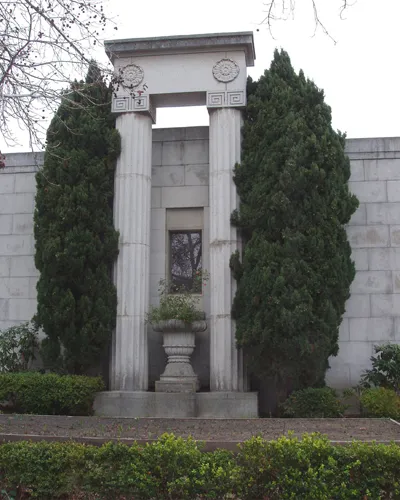
Olmsted’s plan for the new burying ground consisted of one large drawing (approximately six and a half feet by four feet) and a written narrative. In the narrative he called for just five species of trees: Italian cypress, cedar of Lebanon, stone pine, Monterey cypress, and evergreen oak (Quercus agrifolia). He called for the slopes to be planted with native grasses and lots of shrubs. He wrote, “The brooding forms of the coppices and the canopy of the cedars would unite in the expression of a sheltering care extended over the place of the dead, the heaven-pointing spires of the immortal cypress would prompt the consolations of faith.”
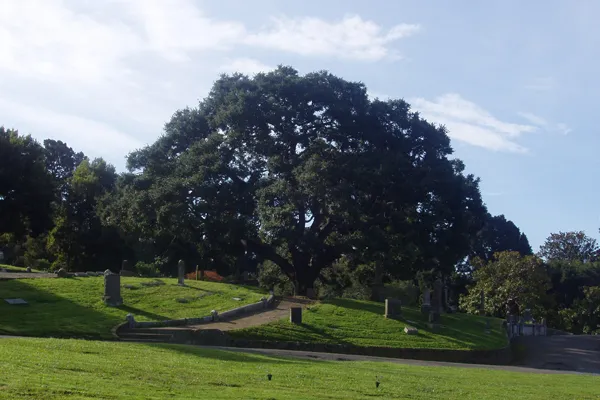
Mountain View Cemetery occupies 226 acres in the Oakland hills. A portion of the grounds are level where Olmsted laid out a formal entry with roads in a diamond-shaped pattern. In the hilly areas he laid out curving roads and pathways that follow the contours. The most prominent feature of the cemetery is a half-mile allée that starts on the level area and climbs up a gentle slope. Four nodes punctuate the allée where Olmsted’s plan called for a public monument at each.
Olmsted envisioned a place for all persons to be buried, he wrote, “a place of our common grief, our common hopes and our common faith; a place wherein we may see and feel our sympathy one with another … where all elements of society would be provided for … so that the community of the dead would be an object lesson for the community of the living.”
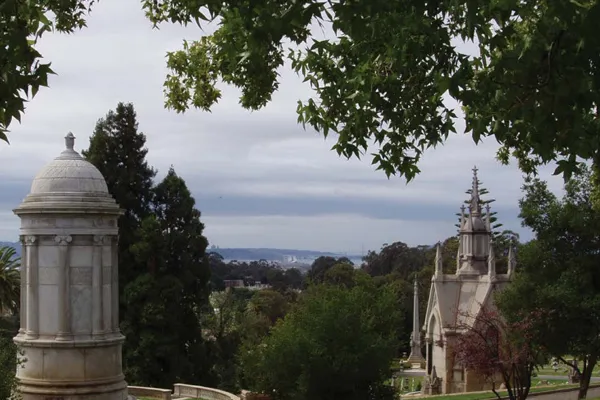
Today this large landscaped open space in the heart of a densely populated urban area provides an oasis that is used by nearby residents as a place to walk or watch birds.
Chris Pattillo, FASLA, cofounded the Northern California Chapter of HALS in 2003 along with Cathy Garrett, ASLA, PGAdesign, and Betsy Flack, ASLA. She initiated the idea for the HALS Challenge in 2009 and has prepared several sets of HALS documentation. She originally published this article here.
In November 2022, East Bay Regional Parks District hosted NAOP for a tour of Mountain View. See the images here.









